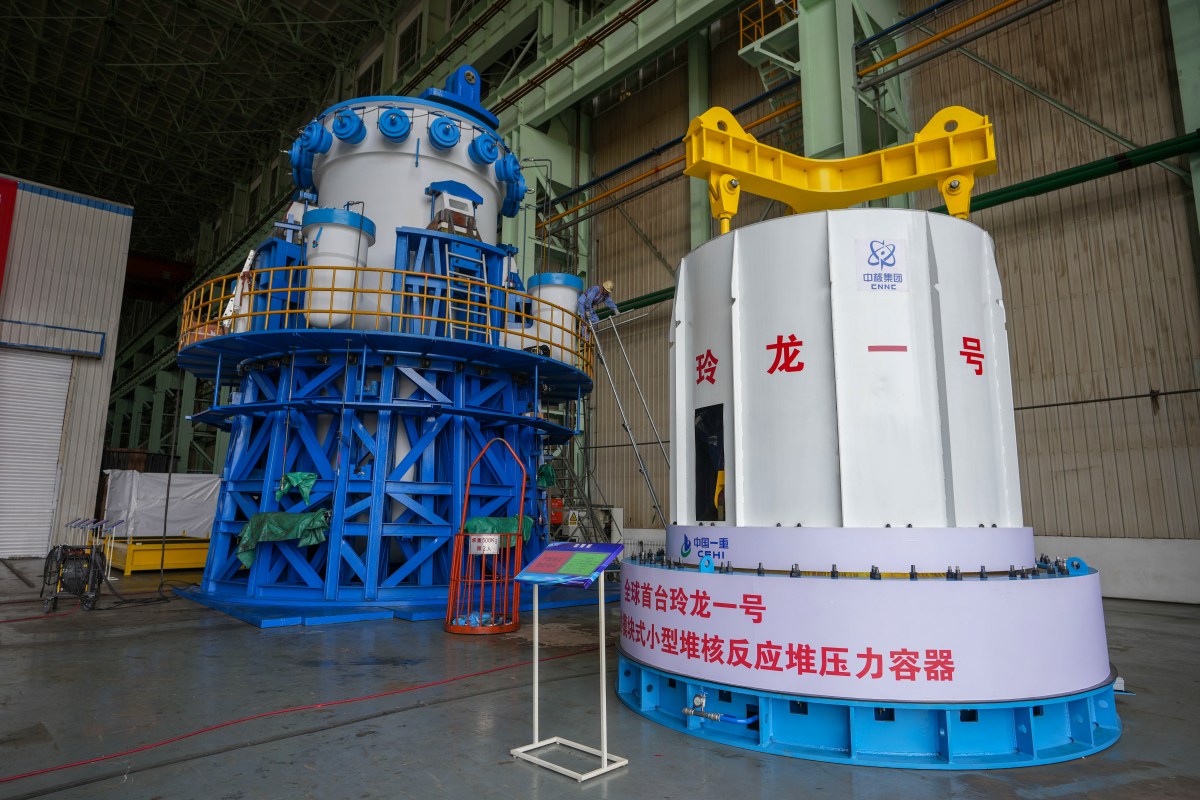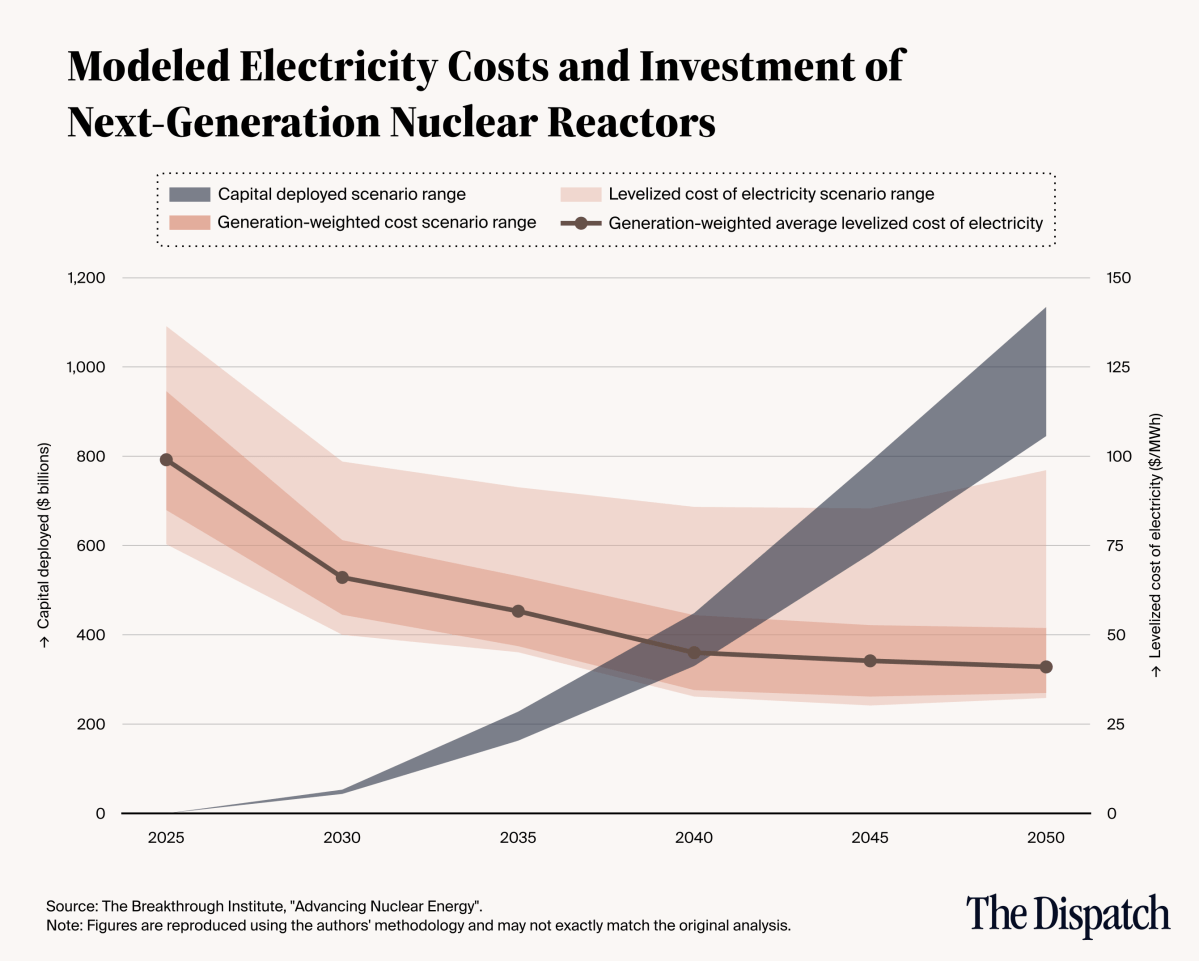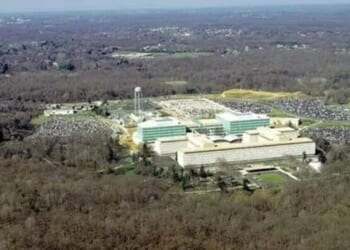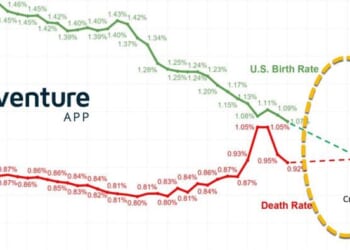Welcome to Dispatch Energy! For a long time, conventional wisdom held that nuclear energy was past its prime in the United States. The environmental lobby, ideologically opposed to industrial-scale infrastructure projects, had successfully lobbied for a gauntlet of regulations, making reactor licensing and development overly onerous and contributing to rising construction costs for nuclear power plants. But over the last decade or so, the cultural tide has turned on nuclear energy, driven by concerns about climate change, energy shortages, and affordable electricity. Today, countries and corporations are scrambling to build more nuclear capacity, and the technology has become the most bipartisan of energy sources amid a period of increasingly polarized energy politics.
The Case for Small Reactors

Last month, the Trump administration inked a multi-billion-dollar investment framework deal with Japan to finance the construction of several new large nuclear reactors in the United States, generating a wave of headlines across the globe. What has received somewhat less attention is the administration’s small reactor policy.
Earlier this year, under the authority of a White House executive order, the Department of Energy announced the creation of the Reactor Pilot Program, an initiative tasked with establishing a novel pathway for the testing of advanced reactor designs being pursued by energy startups like Terrestrial Energy and Valar Atomics.
The Reactor Pilot Program is the latest development in a technological, regulatory, and commercial transformation of the American nuclear industry.
Nuclear power generation has long been dominated by large light-water reactors, which typically produce more than 600 megawatts of power. All the operating commercial reactors in the U.S.—94 reactors at 54 plants around the country—fit this description. Today, though, dozens of companies are exploring smaller designs, reactors that typically produce less than 300 megawatts of power, including some so-called “microreactors,” which are under 50 megawatts and can be as small as one megawatt or less. (A rule of thumb is that one megawatt is approximately enough to power about 1,000 American households.)
The challenge with conventional nuclear power generation has been that each new nuclear plant was typically constructed as its own megaproject. While other electric power industries like natural gas turbines and solar panels benefit from modular technologies and economies of scale, one-off megaprojects rarely enjoy the learning curves and supply chain efficiencies that lead to lower costs over time. That’s why even in countries like France, which has generated most of its electricity from nuclear power for decades, plant construction costs rose over time. Once they’re up and running, nuclear plants generate low-cost, reliable electricity. But when the distance between a proposed project and an operating plant is more than a decade and tens of billions of dollars, the hurdles to nuclear power commercialization become daunting.
The Phantom Fish that Haunts American Energy
Over the past 50 years, countless energy and development projects have been sacrificed at the altar of the Endangered Species Act—blocking billions of dollars in economic activity. The main culprit? A Supreme Court ruling centered around a “new” and “endangered” fish dubbed the “snail darter.” Decades later, it turns out the fish in question wasn’t a “snail darter” at all—and it was neither new nor endangered. Still, its haunting legacy lives on.
Stories We Think You’ll Like
Some countries appear to be grappling with the mistakes of history. China and Korea, for instance, have both seen positive learning curves in nuclear plant construction in recent years by building multiple plants using the same design and often deploying multiple reactors at the same sites. Students of industrial economics will recognize the playbook here: Economies of scale and scope, and learning by doing, drive cost reductions, performance improvements, and supply chain efficiencies. Developers, engineers, and construction teams learn how to build reactors and plants better when they actually build them.
The promise of smaller reactors, in addition to generating power in many more scales and contexts such as remote and off-grid consumption, is the ability to maximally capitalize on these processes of technological learning.
That’s why, in a 2018 report, the Breakthrough Institute, ClearPath, and the R Street Institute proposed “planting the seeds of a distributed nuclear revolution.” Nuclear energy regulatory and commercialization policy reforms could unleash a wave of innovation in smaller, next-generation designs, catalyzing the nuclear energy renaissance that had eluded U.S. policymakers in pursuit of larger designs. As the report’s authors argued:
Reestablishing an economically competitive domestic nuclear industry in the United States will require a different path, one that is responsive to current economic, political, and institutional realities and can leverage America’s comparative advantage: our unrivaled innovation system and entrepreneurial business culture. Small and microreactors offer just such a possibility—relying upon economies of multiples rather than economies of scale and allowing standardization without the implicit nationalization of the U.S. power sector that any strategy for learning through standardization of large reactors would require.
And if this ongoing phase of initial licensing and demonstration is successful, there’s every reason to expect significant innovation in advanced reactor technology over the coming years and decades. As my colleagues at the Breakthrough Institute showed in a nuclear innovation modeling study in 2022, commercial scaling of small reactors beginning in the 2030s could yield significant technological learning and cost declines by the middle of the century:

Much work remains, of course, to realize a next-generation nuclear future. Achieving advanced reactor startup by July 4, 2026—the official target of the Reactor Pilot Program for at least three reactors—is a tall order. Even over more patient timelines, creating a new large-scale commercial industry from scratch is no mean feat. Developing the enriched uranium supply chain for a significant scale-up of nuclear generation presents its own challenges, as do remaining outdated regulations governing radiological health, emergency planning zones, and environmental review. Some states still have de jure or de facto nuclear moratoria on the books, and the well-funded environmental movement remains actively opposed to new nuclear construction.
But over the last several years, American policymakers have begun to tackle this gauntlet of challenges. Congress has passed a slate of laws directing the Nuclear Regulatory Commission to modernize commercialization pathways, including the Nuclear Energy Innovation and Commercialization Act of 2019 and the ADVANCE Act of 2024. These laws, and programs like DOE’s Advanced Reactor Demonstration Program and the Reactor Pilot Program, have made small reactor commercialization official U.S. policy.
A core reason that nuclear energy stagnated in the U.S. for so long is that the sector faces heavy regulation without the nationalized and vertically integrated industries enjoyed by world nuclear energy leaders like China, France, South Korea, and the United Arab Emirates. But the ground is shifting.
Policy Watch
- After New York Gov. Kathy Hochul declared ambitions in June to build a gigawatt (1,000 megawatts) of new nuclear power in New York, the New York Power Authority solicited plans to develop advanced nuclear reactors upstate. Companies have until next month to express interest, and the power utility Constellation has been coordinating with the New York State Energy Research and Development Authority for an early site permit from the Nuclear Regulatory Commission to increase the state’s nuclear capacity.
- In a redux of its recent deals with Westinghouse and Intel, the Trump administration recently announced plans to take stakes in the rare earth companies Vulcan Elements and ReElement Technologies. The move is intended to ramp up U.S. production of magnets, demand for which is expected to skyrocket in the coming years.
- Permitting reform talks in Congress continue to advance, with even longtime environmental stalwarts like Sen. Sheldon Whitehouse expressing optimism that a major bipartisan deal could come together in the coming months. A number of legislative proposals are in the mix, each with both Democratic and Republican cosponsors. These include the SPEED Act, which would significantly curtail requirements for federal environmental regulatory review; the ePermit Act, which would digitally modernize and streamline the procedural review process itself; and the Fix Our Forests Act, which would make it easier to conduct forest management projects that lower the risk of out-of-control wildfires.
Innovation Spotlight
- Last month, Google announced plans to help develop a natural gas power plant with carbon capture and storage technologies as part of the company’s “strategy to advance the next generation of clean electricity sources.” The tech giant is partnering with Broadwing Energy—a project based in Decatur, Illinois—to build a power plant with a generating capacity of more than 400 megawatts and the ability to permanently sequester more than 2 million tons of carbon dioxide emissions a year. The plant is projected to be operational by early 2030.
- Last month, California Forever completed its planning application process. The real estate development corporation, funded largely by Bay Area tech investors, is developing an entire new city between Sacramento and San Francisco. The initiative aims, over the next 20 years, to build more than 60,000 homes and a manufacturing park called the Solano Foundry, which California Forever describes as “a 2,100-acre, 40 million-square-foot thriving ecosystem for the most innovative industries, including advanced transportation, robotics, energy and defense.”
Further Reading
- The longstanding partnership between the American political left and anti-nuclear environmentalism is fracturing. In Heatmap, Fred Stafford wrote about Zohran Mamdani’s support for nuclear energy, and how it marked a significant shift from the New York City mayor-elect’s erstwhile opponent Andrew Cuomo, who as governor vigorously campaigned to close the state’s only nuclear power plant, alleging the plant was unsafe. Mamdani’s openness to nuclear energy puts him at odds with the state’s environmental movement, which, as Stafford explains, includes “Bill McKibben’s advocacy groups Third Act and 350.org, Bezos Earth Fund awardee WE ACT for Environmental Justice, Food and Water Watch, chapters of the Sierra Club, and solar industry boosters Vote Solar, among many others.”
- While activists like Bill McKibben and policymakers like Rep. Sean Casten insist that renewable energy is all we need to achieve energy affordability, the truth is much more complicated. While wind turbines and solar panels have become much cheaper in recent decades, they remain intermittent and land-intensive. As my colleague Lauren Teixeira wrote last month in the Ecomodernist, “Renewables can indeed lower the costs of some retail electricity inputs, like wholesale energy, and raise the costs of others, like capacity and ancillary services. … But true affordability hawks should care only about the net affordability benefit of renewables.”


















